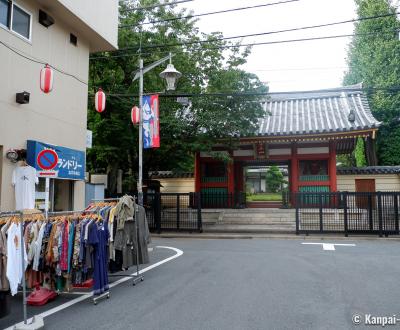Koenji
One of the Most Popular Neighborhoods in Tokyo
Koenji is a district of Suginami ward, located to the west of central Tokyo. The shopping streets sprawling around the eponymous Chuo JR Line station delight amateurs of vintage with many thrifts and secondhand stores and used toys shops while many small izakaya Japanese pubs enliven the night. Koenji is also renowned for its local version of the famous Awa-Odori festival taking place in August each year.
With small buildings huddled together and popular shops, Koenji kept a retro touch appreciated by a part Tokyo’s youth. The area, trendy and lively whilst still being "cool", can be considered a low-key "underground" Tokyo.
Narrow shopping streets welcoming leisurely strolls spread at the north of Koenji station. In the south, a large, covered arcade street also shelters many shops and continues in a beautiful and almost pedestrian-only street, also lined with small shops and especially thrift stores. These streets are pleasantly bustling in the afternoon.
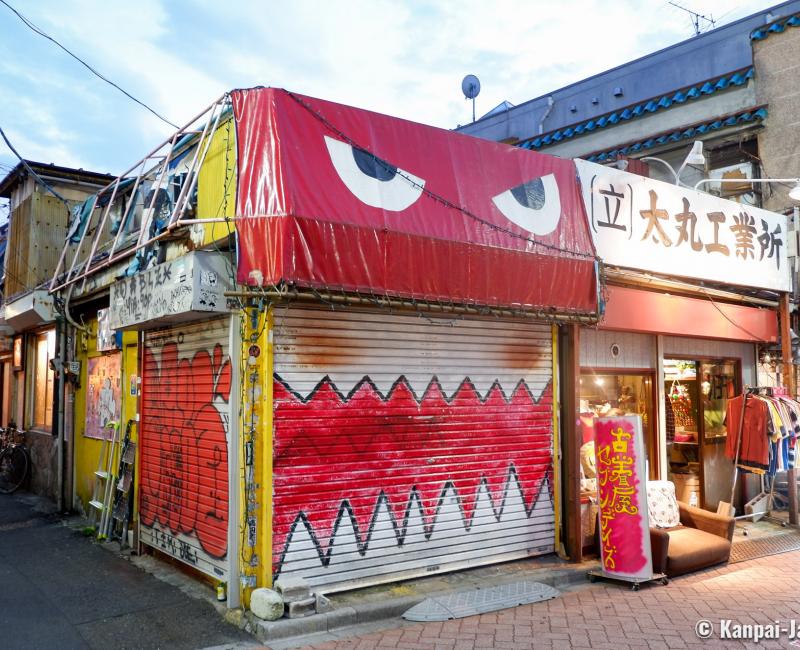
Second-hand and designer’s clothes
Koenji is another shopping mecca for second-hand clothes amateurs besides Shimokitazawa and Harajuku. The vintage shops are found everywhere in the area, along any stroll and enhanced by the numerous charming small temples here and there.
Some shops are quite renowned, such as:
- Hayatochiri, easily recognizable with its monster’s eyes painted on the sign above the shop. It sells second-hand clothes customized by the owner or by famous fashion designers.
- Whistler/Chart, near Koenji Hikawa shrine, is specialized in men’s fashion and displays a splendid collection of second-hand shoes and leather items to create a more classical look, in a deliciously old-fashioned decor.
Just next to it is Koenji Central Park. There is nothing remarkable in this little playground, except that it may have inspired Haruki Murakami for his novel 1Q84.
The paradise of vintage and upcycling
A high place of hand-me-down goods, the area boasts many used household appliances or furniture shops. It illustrates the way of life Koenji is renowned for: living against the mainstream trends of Japanese society and giving voice to those who advocate for less work and less consumption and enjoying more the pleasures of life.
For the last instance, many second-hand toy shops allow for a return to childhood, such as:
- Star Case, specialized in Star Wars items of all periods,
- 2000 Toys, a real-life Ali Baba’s cave, where old toys literally cover the shop’s walls and ceiling.
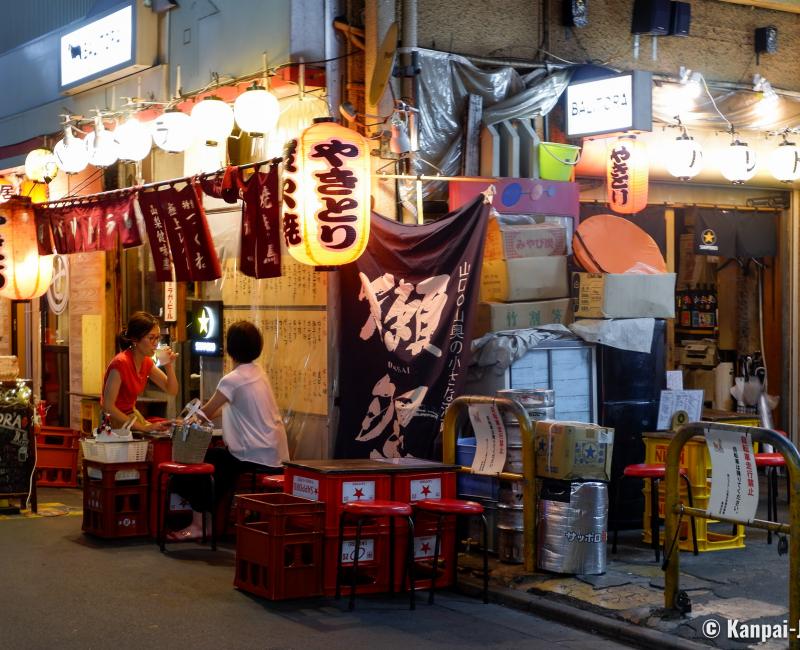
Artsy Cafés, typical bistros, and punk rock music
Vintage shops are not the only attraction in Koenji. A few places are ideal for a gourmet break: Floresta, for example, bakes some delicious home-made donuts shaped in small animal or cute characters.
Cafés with unusual settings are on the recommendation list as well, including:
- R-za Dokushokan on two floors, one of which characterized by an overgrown vegetation,
- Garage Dogberry, offering a cozy and warm atmosphere, thanks to its large, mismatched armchairs.
Lastly, Koenji is an ideal night outing and a paradise of small izakaya pubs with outdoor terraces, under the traditional lanterns 🏮 lighting. Used wooden boxes serve as table for customers who came to have a drink and eat some good skewers, in a nicely plebeian atmosphere.
As for the sound ambiance, the dynamic and experimental underground rock and punk music stage can be enjoyed in various places, from the themed bar to a small concert venue, and always within affordable prices.
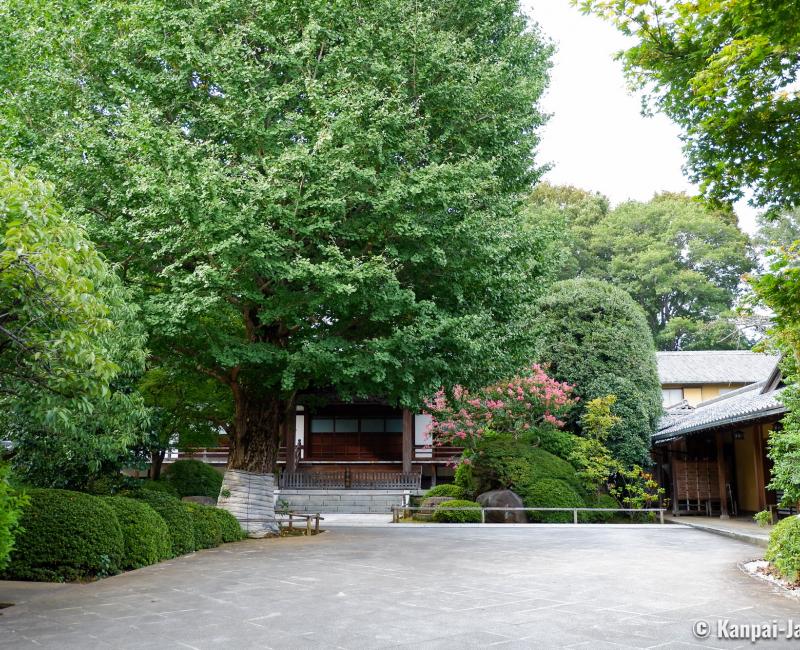
A residential area with many temples
Temples are another charm of the area, and they are many in Koenji, especially in the south of the station. A village within the big city, this residential area shelters a part of traditions to discover in its side streets. Three small temples are aligned in the same street toward south-east:
- Saisho-ji,
- Sho-ji, and,
- Sotai-in.
In another street in the north, Chozen-ji temple is characterized by the kindness of the people in charge and its collection of unusual statues at its entrance. One of them is a Buddha that seems to hold his cheek, so people come to pray it for dental pain relief.
Going back towards the station, Shukuhozan-Koenji is certainly the most beautiful temple, with its perfectly tended trees and the wonderful carved wooden pediment under the roof of its main hall. The name Koenji derives from this temple.
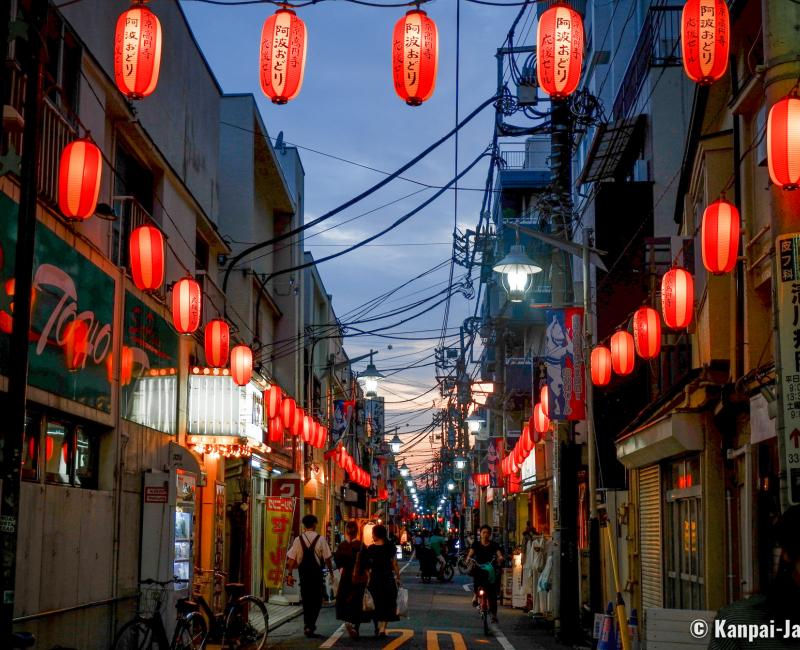
Awa-Odori, the internationally renowned festival in Koenji
Of a larger cultural importance, Tokyo Koenji Awaodori festival is a dance performance held in August each year attracting about 10,000 dancers and 1 million spectators. It is the largest gathering of this type in the capital. Each group of performers dances the same simple choreography with their own tweak. With its unique and very friendly ambiance, this event is a must-see when in Tokyo at this time of the year.
Despite a growing attractiveness for tourism, Koenji’s area succeeds in maintaining its original atmosphere thanks to the dedication of its inhabitants, who treasure their local way of life and independent shops, far from the frenetic consumption of central Tokyo or districts filled with famous brands such as Harajuku.

